CREUX DU VAN (NE)
Cold scree slope
Elevation: 1190-1290m - Massif: Jura Mountains - Commune: Béroche (NE)
This forested site has been explored since 1997, following the botanical surveys of Richard (1961) who formulated the hypothesis that permafrost was present in the scree forming the slopes of the Creux du Van cirque. Different measurements confirmed the presence of permafrost and permitted explaining it as the result of a complex ventilation system through the scree. The internal air flow direction is reversible. It flows downwards while air temperatures remain above approximately +6 °C and upwards in the reverse case. As a result, lower sections stay constantly cold thus allowing snow to persist until very late. Conversely, ice is non-existent in the upper sections of the scree slope and snow disappears very early during the year. The vegetation is specific to the various thermal regimes of the ground.
-
Measurements and observations
Thermal (ground surface temperature : GST, BTS)
Geophysics (electrical resistivity, refraction seismic)
Weather station, snow stake -
Figures
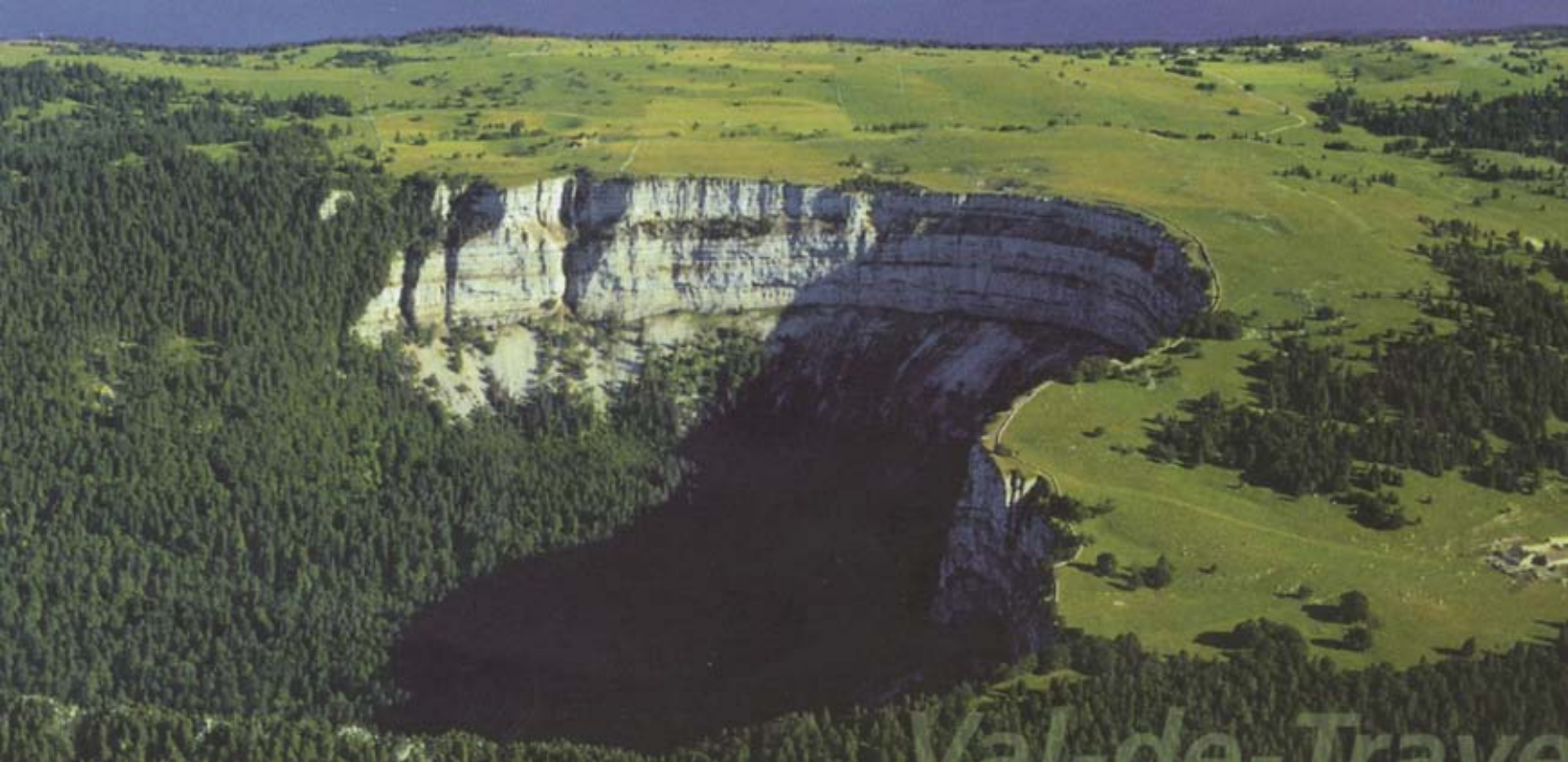
Our measurements are mainly performed on the scree slope at the contact between sun and shadow
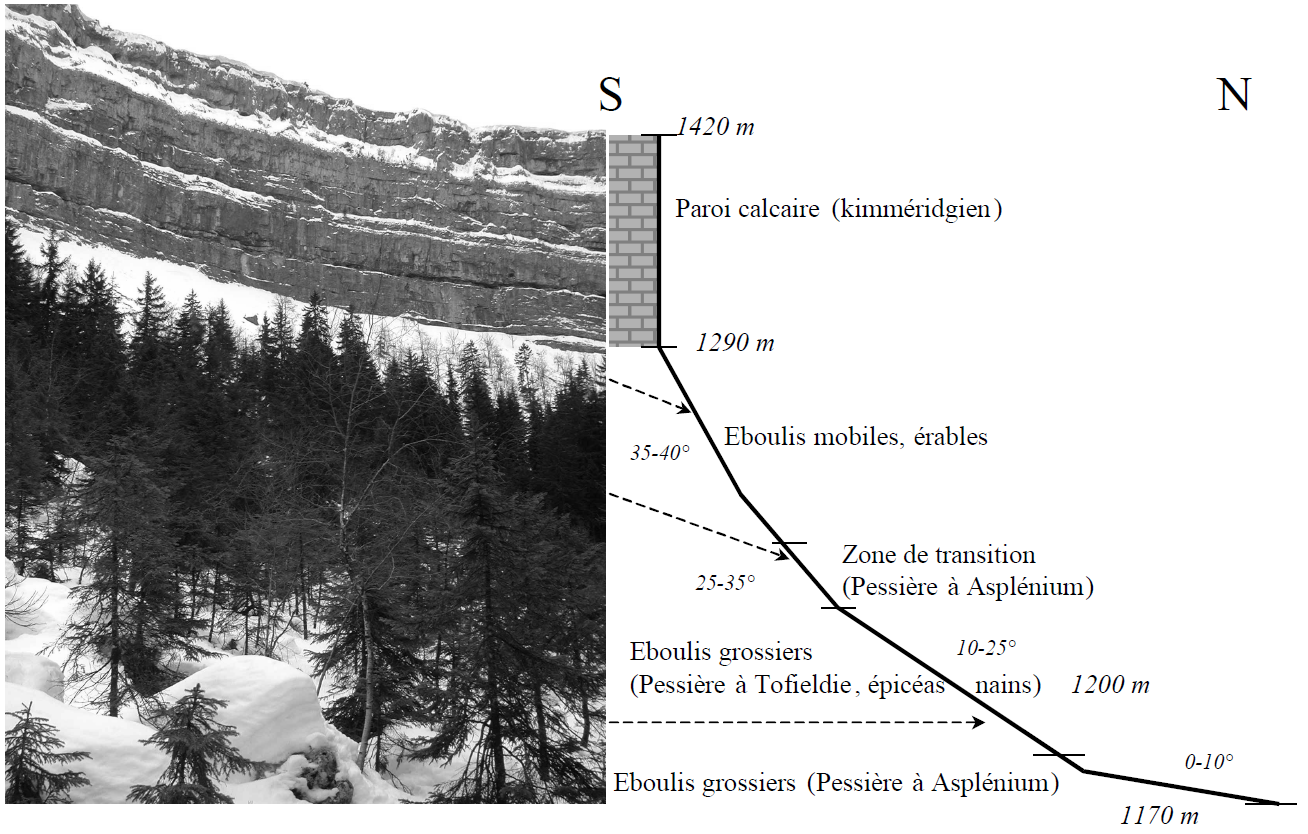
Overview of the study site and descriptive sketch of the scree slope
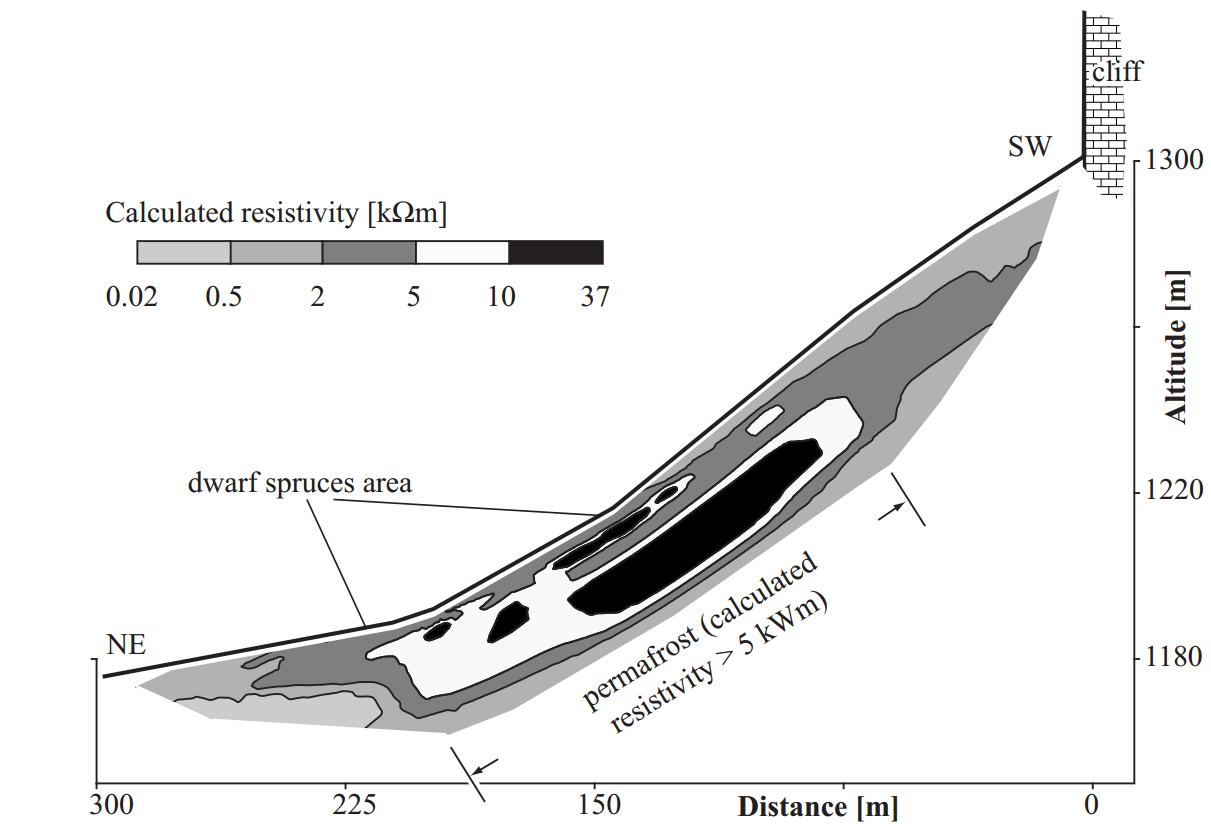
Electrical resistivity profile through the scree slope evidencing the probable occurrence of permafrost at depth (Delaloye et al., 2003)
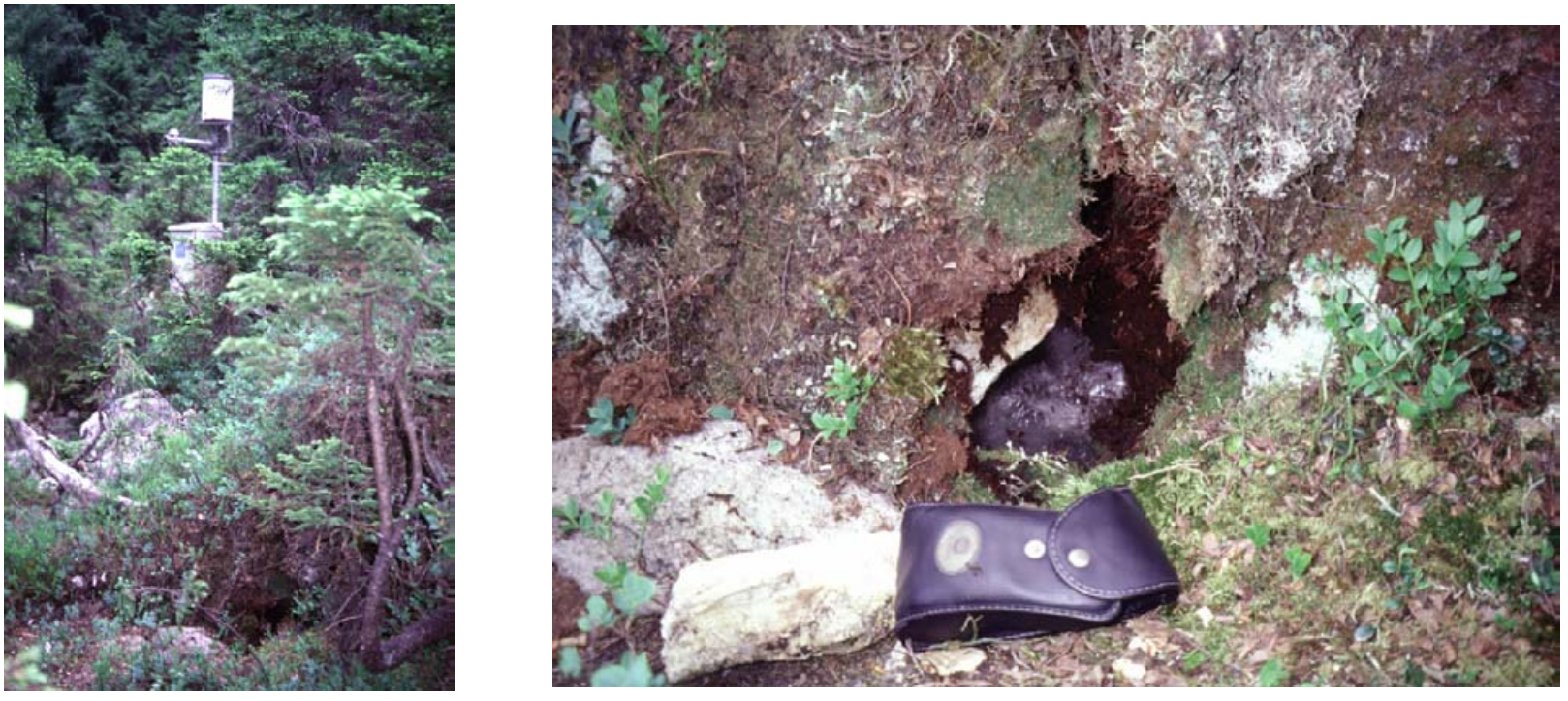
View of the weather station located in a zone with a dwarf red spruces (left); ice present near the surface on the 19th of June(right).
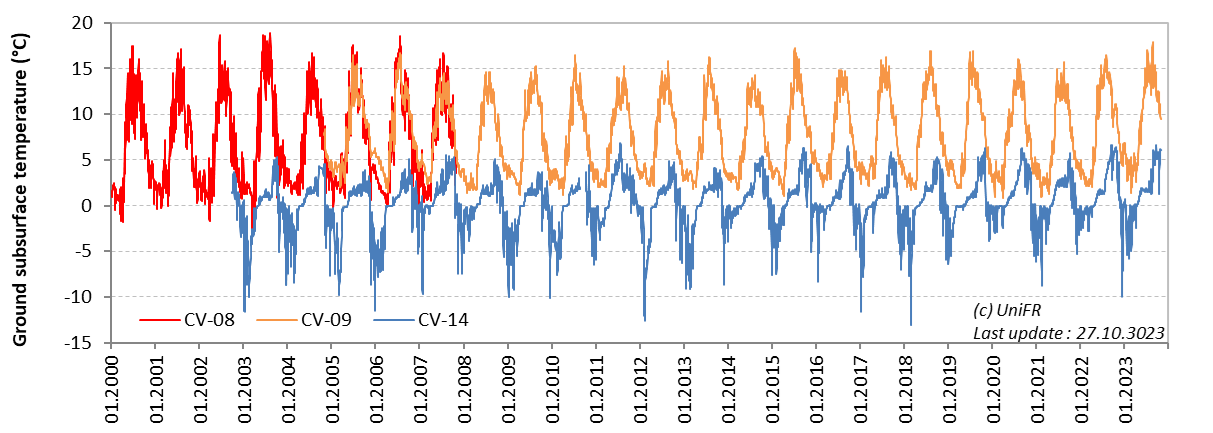
Daily sub-surface temperature in the lower (CV-14) and upper (CV-08 and CV-09) parts of the talus slope.

Mean annual sub-surface temperature in the lower (CV-14) and upper (CV-08 and CV-09) parts of the talus slope, as well as in the non-ventilated forest soil about 50 m away from the bottom of the talus slope (CV-01).
-
Collaboration
-
Publications
Morard, S., (2011). Effets de la circulation d'air par effet de cheminée dans l'évolution du régime thermique des éboulis froids de basse et moyenne altitude. PhD thesis, Fac. Sciences, Univ. Fribourg, GeoFocus 29. p. 103-115 (pdf)
Morard S., Delaloye R., Lambiel C., (2010). Pluriannual thermal behavior of low elevation cold talus slopes (western Switzerland). Geographica Helvetica, 65/2, 124-134. (pdf)
Morard S., Delaloye R., Dorthe, J. (2008). Seasonal thermal regime of a mid-latitude ventilated debris accumulation.Proceedings of the Ninth International Conference on Permafrost, July 2008, Fairbanks, Alaska, 1233-1238. (pdf)
Morard S., Delaloye R., Dorthe J. (2008). Indices de fonctionnement de la ventilation des éboulis froids. Proceedings, Swiss Geomorphological Society (SSGm), Annual Meeting 2007, Samedan, Switzerland, 44-56. (pdf)
Delaloye, R. (2004). Contribution à l’étude du pergélisol de montagne en zone marginale. PhD thesis, Fac. Sciences, Univ. Fribourg, GeoFocus 10 (pdf)
Delaloye, R., Reynard, E., Lambiel, C., Marescot, L. & Monnet, R. (2003). Thermal anomaly in a cold scree slope, Creux du Van, Switzerland. Proceedings of the 8th International Conference on Permafrost, Zurich 2003, Vol. 1, 175-180. (pdf)
Marescot, L., Loke, M. H., Chapellier, D., Delaloye, R., Lambiel, C. and Reynard, E. (2003). Assessing reliability of 2D resistivity imaging in permafrost and rock glacier studies using the depth of investigation index method. Near Surface Geophysics, 1, 57-67. DOI: 10.3997/1873-0604.2002007. (pdf)
Delaloye, R., Reynard, E. (2001): Les éboulis gelés du Creux du Van (Chaîne du Jura, Suisse), in : Environnements périglaciaires, Association Française du Périglaciaire, 8, 26, 118-129.
